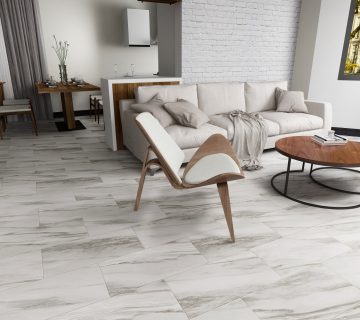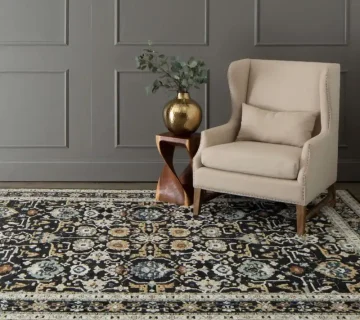Bamboo flooring is an extremely beautiful and durable alternative to the hardwood floors. It is an eco-friendly flooring choice that offers for strength, resilience, and cost-effectiveness. Bamboo floor planks are similar in appearance to other hardwood floor planks such as oak and maple and are installed in basically the same way. If the planks of the bamboo floor get damaged, they can be repaired in many of the same ways like other traditional hardwood floors. So if your bamboo planks need more than touching up or cleaning, you can follow some simple but useful tips for replacing bamboo floor planks.
First of all, you need to determine the installation method of your bamboo floor. If your flooring is secured to the sub-floor by a glued down, nailed down, or stapled down method, and you have to replace even one plank, then the work becomes very complex. It will need special attention to replace the plank as one slight mistake can ruin your floor. In this case, it would be better that you look for the services of a professional to replace the damaged planks. This article will give you an idea of what is involved with the major repairs to the stapled- down or nailed-down planking, and why it is strongly recommended to hire a professional to do the repairs.
For the nailed-down flooring method, your planks might be installed by either “Blind Nailing” or “Face Nailing” technique. “Blind Nailing” technique will have nails spaced approximately 5 to 8 inches apart and nails would have to be driven down further to remove the planks. However, the nails will not be easy to see as they are angled into the tongue side of the planks. On the other hand, “Face Nailing” technique will have nails driven straight down through the top of the planks and you have to look for the small spots of wood filler, to locate these nails.
The next thing you need to do is to mark the size and location of the planks that need to be replaced. You may want to remove the section of the plank from the damaged area to the nearest end or you might have to remove just the affected area between the two ends of the plank. After you marked the location of the plank that is to be replaced, the next step is you draw a reference line across the plank and drill a row of small holes along the side of the line, into the bamboo plank that is to be replaced. It is important to drill carefully so that you do not drill into your sub-floor.
After drilling, chisel out the plank by chiseling between the drilled holes until you can split the bamboo plank. If you have to remove the entire plank, it would be better that your first split it in half and then separate the two pieces. Next step is to clean up any edges or remaining pieces by using a hammer, sharp wood chisel, and a steady hand. Also, clean up any debris or splinters that may be left behind on your sub-floor. You need to look for the exposed nails as well, and remove or drive them completely into the sub-flooring.
Next step is to cut the replacement piece of a precise length. One side of the groove and tongue needs to be removed to insert accurately into the empty space. Before making any cuts, be sure to line up the board. Now, apply a flooring adhesive or glue to the bottom of the plank, or “face nail” plank to the sub-floor. Angle the remaining groove and tongue edge into the existing plank and drop into place smoothly. For the “Face Nailing” method, you would also have to apply sand, wood filler, and countersink the nails to match the rest of the flooring. If your bamboo flooring is not permanently fixed to the sub-floor or is floated installation, you can easily handle the repairs on your own. You have to simply remove the quarter or base round molding on the side of the room closest to the affected area and start disconnecting planks.



